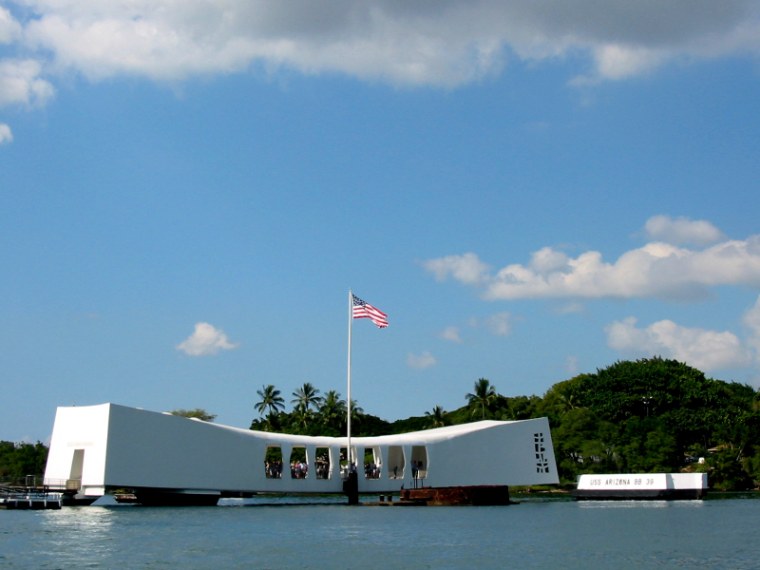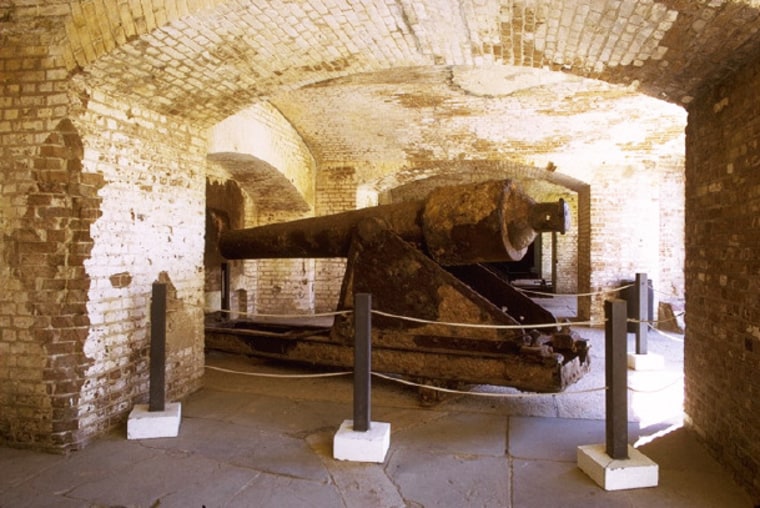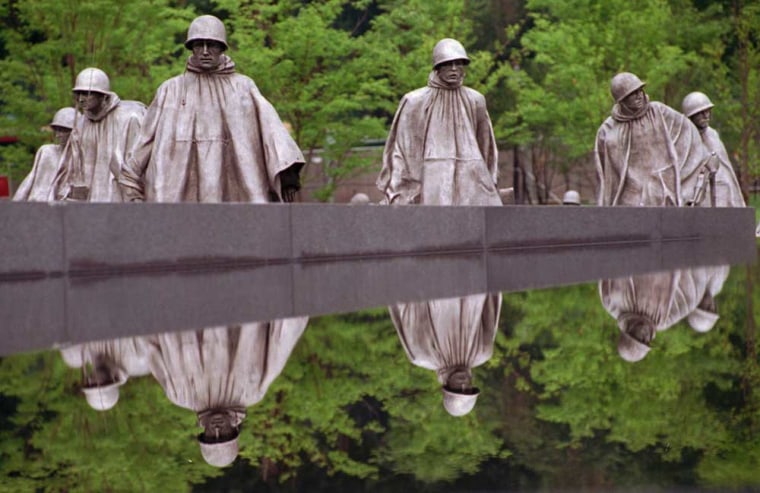“The purpose of Memorial Day is to honor America’s war dead,” says Joe Davis, the Veterans of Foreign Wars’ Director of Public Affairs, offering a blunt reminder of the intent of a holiday that originated in the U.S. after the Civil War as “Decoration Day,” an occasion for citizens to lay flowers at the graves of those killed in battle.
While that intent is at times drowned out by the din of summer-inaugurating celebrations, solemn ceremony tends to be the order of the day at monuments and memorials throughout the country that commemorate (and mourn) America’s wars and soldiers.
Visitation peaks at certain public monuments on Memorial Day (at Arlington Cemetery’s Tomb of the Unknown Soldier, for example, an annual presidential wreath-laying ceremony draws large crowds), but public war memorials attract steady traffic throughout the year, and the better-known monuments draw millions annually.
We looked at the National Park Service’s data on annual visitation to its various park “units” to compile a list of the 15 most-visited “memorial” destinations. While the NPS war-related sites and monuments have numerous designations (some are dubbed National Monuments or Memorials, others are National Historic Places; still others are called National Military Parks), we chose the top war-related sites, in terms of average annual visitation (from 2003 to 2007), regardless of their official categorization.
As might be expected, Washington, D.C.’s iconic war statues, walls and plazas dominate the top of the list. Gavriel Rosenfeld, Associate Professor of History at Fairfield University, refers to the nation’s capital as the “nerve center of memorials.” In addition to Arlington Cemetery (which itself contains dozens of monuments and memorials within its boundaries), the Washington, D.C. area is home to the National World War II Memorial, the Vietnam Veterans and Korean War Veterans Memorials, among many others.
The architectural styles of this array of memorials comprise polar opposites within the space of a few miles. Rosenfeld says that the Vietnam Veterans Memorial and the National World War II Memorial represent distinctly different forms of commemoration. The former, a sunken, V-shaped black granite wall inscribed with the names of the war’s casualties, takes what he calls a “humble aesthetic form,” while the latter assumes a more “traditional, heroic style.”

Situated on the National Mall between the Washington and Lincoln Monuments, the World War II Memorial was designed by Austrian-American architect Friedrich St. Florian and features a semicircle of pillars (representing the U.S. states of 1945) flanked by arches adorned with eagles and wreathes. Although it opened only a few years ago—in 2004—“it looks like it could have been built right after the war,” says Rosenfeld. “Its style is what many historians would call pompous or monumental—it’s hardly self-effacing.”
In fact, says Rosenfeld, “A lot historians distinguish between memorials and monuments. The latter are meant to be admired or looked up to, while memorials are more admonitory—to remind us not to forget a certain lesson.”
“I think memorials and monuments act as physical symbols of our reverence,” says Gina Gray, Director of Public Affairs at Arlington National Cemetery. In addition to the Tomb of the Unknowns, says Gray, the USS Maine Mast Memorial is one of the most heavily visited sites within Arlington. Dedicated in 1915, the memorial is built around the actual mast of the ship sunk in Havana, Cuba, in 1898 (its destruction was a catalyst for the Spanish-American War).
The Maine’s history may be unfamiliar to many of Arlington’s visitors, but Gray says it’s a good example of another role that memorials play in general—acting as a “points of reference” to the past; in the same way, she says, that the cemetery’s tomb for unknown Civil War dead, which contains the remains of 2,111 anonymous soldiers, makes a 19th-century war seem more present and real for many visitors to Arlington.
Some of the most-visited memorial sites on our list make history present in a dramatic fashion—Valley Forge (of Revolutionary War fame) and the Shiloh National Military Park (site of the bloody Civil War battle), host regular “living history” events. At Valley Forge, costumed interpreters talk about 18th-century soldier life, and at Shiloh, re-enactors depict Union and Confederate camp scenes.
Rosenfeld explains memorials’ referential function this way: “Any time you look at an historical event from the past that is defined by suffering, bloodshed and horror—it underscores why we are grateful… it reminds us of how bad things were in the past, and breaks up the humdrum of our daily lives by telling us about a period in history when dramatic things were happening.” Unlike in Europe, he explains, “you hardly ever see signs of ruins—or signs of failure and destruction” in the American landscape. “Without those visible reminders of the destructiveness of battle,” he adds, “it’s easy to forget about the history and the true horror of war.”

The Veterans of Foreign Wars’ Joe Davis comments on another function of war memorials and monuments. “War memorials—from the national level all the way down to the local—are a way of saying thank you [to soldiers] for their service, and thank you to military families who have sacrificed as well.”
Davis describes a further reason the NPS memorial sites may receive hundreds of thousands—and sometimes millions—of visitors per year. Commemorating or mourning war only in private, he says, would be missing an important part of the picture: “Monuments share the experience of war with the public,” he says. “And war is a shared experience.”
To find out which of the NPS memorial sites receive the most annual visitation, view our slide show of America’s 15 most visited national monuments and memorials.
Note: While we have tracked data exclusively for sites within the National Park Service system, there are, of course, hundreds of war memorials and monuments that do not fall under its jurisdiction. A prominent example is the National World War One Memorial and Museum, located in Kansas City, Missouri, which, according to its spokesperson, Denise Rendina, received 171,040 paying guests in 2007 and approximately 400,000 when the total includes on-site events. And National Park Service spokesperson Butch Street explains that the agency also oversees more than 100 “Related Areas,” such as the African American Civil War Memorial in Washington, D.C., which do not report visitation figures to NPS.
